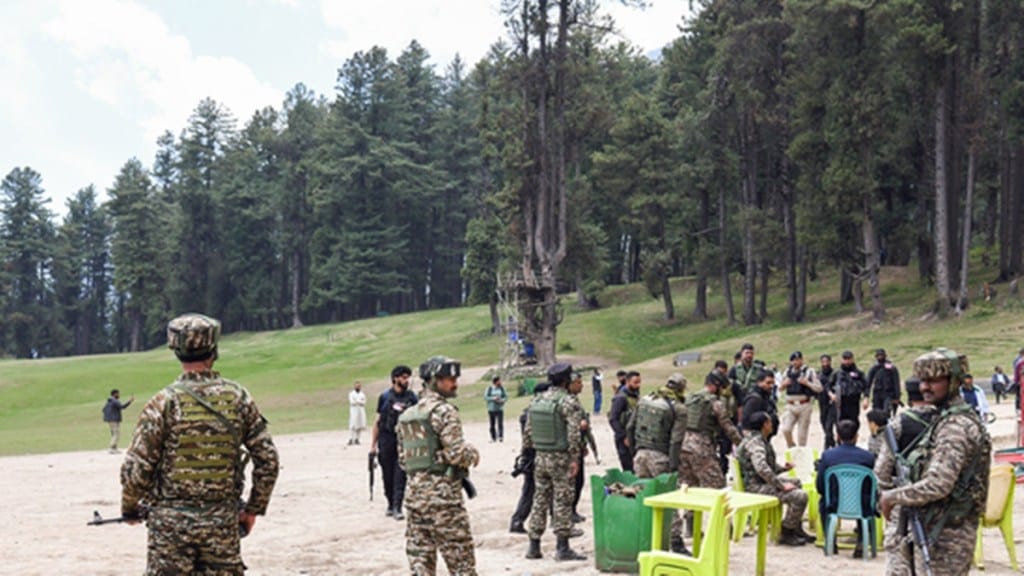By Farooq Wani
Curtains have been brought down on the three-and-a-half to four days long semi-war-like operation between India and Pakistan, thanks to a desperate mid-afternoon hotline call for a ceasefire from Pakistan army’s Director General Military Operations [DGMO] to his Indian counterpart.
The guns and drones from across the Line of Control (LoC) may have fallen silent, but for how long one doesn’t know. Given Pakistan and its armed forces’ penchant for reneging on commitments made in the past, the Indian establishment will definitely have to adopt a wait and watch approach to ensure that Islamabad is serious about maintaining peace on its Eastern border.
Peace between South Asia’s two major neighbours can be described as “tenuous” at best. Post the substantial damages inflicted on targeted “terrorist” facilities, air bases and weaponry in Pakistan as well as loss of lives, and loss of civilian lives and property on the Indian side, common sense to avoid further military escalation should prevail.
The means have justified the end and what needs to be prioritised now is a commitment to peace. For that, Islamabad needs to walk its talk and be a willing partner, as given its precarious financial condition, it cannot afford a conflict. Moreover, a conventional war can easily spin out of control and go nuclear due to a rash error of judgment.
What are the takeaways for India from this particular military escalation with Pakistan? First, it has demonstrated its military prowess in the face of provocative hostilities from Pakistan. Second, New Delhi demonstrated that it will not let terrorism go unpunished, and will determinedly and resolutely strike at its fountainhead.
Third, the success of “Operation Sindoor” will give the Indian armed forces the confidence to go forward in building and honing its capacities further. Fourth, this swift, decisive tri-services and coordinated performance both at the diplomatic and military fronts has showcased the seamless synergy between India’s political and tri-services leadership.
Fifth, this operation has the hallmark of maturity in the midst of an atmosphere of agree-to-disagree competitive politics. India’s political leadership and citizenry spoke in one voice, denouncing the horror that took place in the name of religion in Pahalgam.
The April 22, Pahalgam attack on tourists was the proverbial straw that broke the camel’s back! Prime Minister Modi’s decision to give the armed forces leadership a free hand in deciding how and when they wished to strike at Pakistan is praiseworthy.
Now that the dust seems to have settled, the effort should be to prevent communalisation of this tragedy. National unity and territorial integrity are once again at centre-stage and in the limelight and shouldn’t be allowed to fade. There’s a need to also beef up internal security and the intelligence network, and to put in place credible deterrence against Pakistan’s oft-repeated misadventures.
Framing a joint politico-military-economic-diplomatic strategy to keep Islamabad at bay is the need of the hour. Simultaneously, New Delhi would do well to tell the “Big Powers” (read US, China & Russia, and Europe to an extent) to be careful with their use of words and geo-political actions, and not take credit where not due. Western geo-political rhetoric is at best self-serving and rarely genuine in response or feeling.
Did Washington really bring about the ceasefire is still in the realm of speculation? US President Donald Trump may have jumped the gun and tried to take the credit but the messaging from Modi firmly showcased New Delhi’s new-found confidence of not succumbing to pressure from the international community!
The fact of the matter is that India was within its rights to undertake Operation Sindoor, and now is the time to dispassionately analyse this decision. India has not decimated Pakistan’s military infrastructure, it has only sent a warning that it can, if it wants to and should Pakistan pose a similar threat in the future.
What India needs to be wary of is Pakistan’s drone warfare potential and the fact that its strategy approves indiscriminate targeting of civilians. This confrontation has highlighted the need for increasing awareness and understanding the impact of new defence technologies and disinformation campaigns.
As regards exposing disinformation, it’s heartening to see that India is learning fast and the Prime Minister’s visit to Adampur air base in Punjab’s Jalandhar district on May 13 was a masterstroke that exposed Pakistan’s humongous lies.
Readers would recall that Pakistan’s state media and the military spokesperson had announced that not only had this airbase been completely destroyed but that the S400 missile launcher sited there had been badly damaged. However, visuals of Modi’s visit that showed an unscathed air base and a completely undamaged S400 missile launcher took the lid off Pakistan’s disinformation campaign.
With Modi declaring that henceforth any act of terrorism orchestrated or sponsored by Pakistan will be seen by India as an act of war, a “new normal” in New Delhi’s foreign policy has been enunciated and this long overdue step is most welcome.
The author is Editor Brighter Kashmir, Author, TV commentator, political analyst and columnist. Views expressed in the above piece are personal and solely those of the author.
Disclaimer: Views expressed are personal and do not reflect the official position or policy of FinancialExpress.com. Reproducing this content without permission is prohibited.

